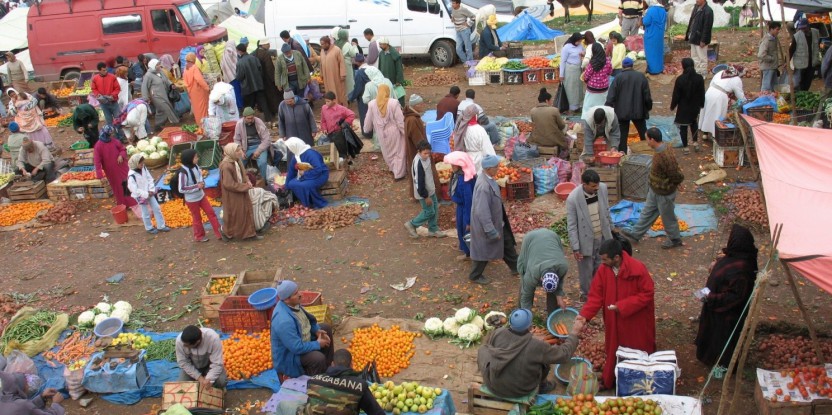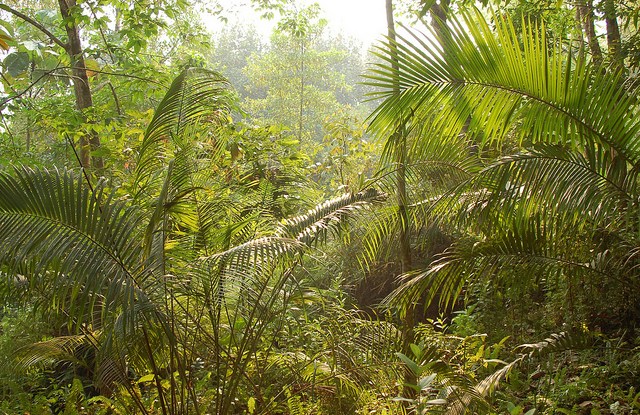Winter has arrived here in Morocco. From December to March, there is a lot of rain (more than the rest of the year) – and widespread availability of wild vegetables. Although wild foods, especially wild vegetables, have held an important place in Moroccan culinary practice for generations, up until recently, they have been largely overlooked by research and policy initiatives. But, two recent publications have changed this. In one recent publication, Nassif and Tanji, reported almost 80 species of edible vegetables in Morocco.
Editor’s Note: This article originally appeared on the website of Landscapes for People, Food and Nature.
A study that we published last April showed that in a community in the Rif Mountains, 84 percent of households had used wild vegetables in the last seven days and wild vegetables were eaten up to four times a week. This work suggests that rural Moroccan communities are using their agricultural landscapes in diverse ways. Wild vegetables are collected from fields, field margins, roadsides and streambeds: diversity within the landscape ensures local communities have access to more than just staple crops.
TRADITIONAL KNOWLEDGE, DIETARY DIVERSITY
Our study also looked at the geographic distribution of knowledge and use of wild leafy greens across three sites in Morocco and found significant variation, not only between regions, but also between villages in the same region. For example, in the north, Calendula arvensis and Erodium moschatum are regularly consumed, while women in the High Atlas Mountains to the south say these species are not eaten, even though they grow there as well.
Markets act as a site where knowledge is transmitted and a place where social and cultural values, tastes and dietary habits are shaped
In the north, women in one village call the genus Calendula “Karn kebsha,” while in a village only 40 kilometers away, it is called “Mesk azara.” There was a greater overlap in the knowledge of wild vegetables among villages that use the same market. We think that this is because markets act as a site where knowledge is transmitted and a place where social and cultural values, tastes and dietary habits are shaped. We conclude that markets could have an important role in preserving the diversity of rural agricultural systems and landscapes in Morocco.
In a country like Morocco, where there is great ecological variation across the landscape, markets allow farmers to specialize in production of crops best suited to the ecological setting of their farm. Rural markets act to pool together local food diversity, allowing communities to maintain their dietary diversity, as long as agrobiodiversity is maintained across the landscape. Data presented in another recent paper highlights the fact that rural markets in Morocco are a source of a greater variety of foods than what is produced on most farms and that local markets include a greater diversity of foods than what is tracked in national statistics.
In our research site in the Rif Mountains, 25 percent of the different types of foods consumed by households were produced by the family itself, while 27 percent were purchased at the market but produced locally, and 41 percent are imported items such as tea, salt, sugar, oil and spices (unpublished data). These findings suggest that in rural Moroccan context, the diversity of foods produced locally (i.e. the landscape-level agrobiodiversity) can have a direct impact on local people’s dietary diversity.
Growing evidence from developing countries is spurring attention to the importance of the food environment (including the availability, affordability, convenience, and desirability) in developing countries. If traditional markets in rural Morocco are indeed sites where the transmission of knowledge and culture about traditional and wild vegetables occurs, they may play an important role in shaping and reshaping perceptions, preferences and desirability of healthy components of local diets. The fact that this week we found wild Malva spp. for sale in one of the major supermarkets here in Marrakech may have important positive impacts on dietary preferences and therefore, dietary habits.
Bronwen Powell is a post-doctoral researcher with the Center for International Forestry Research. Abderrahim Ouarghidi is a researcher affiliated with Global Diversity Foundation and the Programs and Training Manager for the High Atlas Foundation. For questions about this research, contact Powell at b.powell@cgiar.org.
We want you to share Forests News content, which is licensed under Creative Commons Attribution-NonCommercial-ShareAlike 4.0 International (CC BY-NC-SA 4.0). This means you are free to redistribute our material for non-commercial purposes. All we ask is that you give Forests News appropriate credit and link to the original Forests News content, indicate if changes were made, and distribute your contributions under the same Creative Commons license. You must notify Forests News if you repost, reprint or reuse our materials by contacting forestsnews@cifor-icraf.org.

